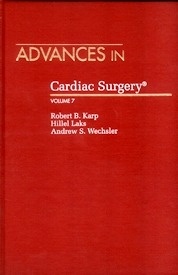Reseña o resumen
Every year throughout the world, individuals' health is damaged by their exposure to toxic chemicals at work. In most cases these problems will resolve, but many will sustain permanent damage. Whilst any justified claim for compensation requires medical and legal evidence a crucial and often controversial component of this process is the establishment of a causal link between the individual's condition and exposure to a specific chemical or substance. Causation, in terms of how a substance or substances led the claimant to his or her current plight, can be difficult to establish and the main purpose of this book, is to provide the aspiring expert report writer with a concise, practical guide that uses case histories to illuminate the process of establishing causation in occupational toxicity proceedings.
In summary:
A practical, accessible guide to the preparation of balanced, scientifically sound expert reports in the context of occupational toxicology.
Focuses on the scientist's role in establishing a causal link between exposure to toxins and an individual's ill health.
Includes real-life case histories drawn from the Author's 15 years experience in this area to illustrate the principles involved.
Expert Report Writing in Toxicology: Forensic, Scientific and Legal Aspects proves invaluable to scientists across a range of disciplines needing guidance as to what is expected of them in terms of the best use of their expertise and how to present their findings in a manner that is authoritative, balanced and informative.
Table of Contents
Preface
1 A brief history of occupational toxicology 1
1.1 Occupational toxin exposure in antiquity 1
1.2 The Middle Ages and the Renaissance: The beginnings of modern occupational toxicology 2
1.3 The Industrial Revolution 5
1.4 Petrochemicals: The beginnings 6
1.5 Petrochemicals and mass production 7
1.6 Aromatic amines: Tyres, dyes, explosives and cigarettes 9
1.7 Contemporaneous knowledge 11
1.8 The pursuit of truth 12
1.9 The Mad Hatter' 13
1.10 The Radium Girls' 15
1.11 Asbestos 16
1.12 Occupational toxicity: Medicine and science 18
1.13 Health and safety today 20
References 20
2 The expert report process in legal context 23
2.1 The would-be claimant's initial position 23
2.2 Industrial injuries disablement benefit 24
2.3 The legal process: First steps 25
2.4 Legal advice: Who pays? 26
2.5 Claim progression and possible outcomes 27
2.6 Pre-action protocols 28
2.7 Case initiation: Legal steps 29
2.8 Expert reports: Medical 30
2.9 Causality: The scientific report 31
2.10 Recruiting the scientific expert 32
2.11 Expectations of the expert: The court 33
2.12 Expectations of the expert: The solicitor/expert relationship 34
2.13 The expert report: The contract 36
2.14 Compiling the report 37
2.15 The toxin or toxins 38
2.16 Toxin entry 39
2.17 Toxin chemical nature 41
2.18 Exacerbating factors in toxin absorption 42
2.19 Causation: Mechanisms 42
2.20 Contemporaneous knowledge 44
2.21 The initial draft 46
2.22 Silence in court 46
2.23 Report writing in the real world 48
References 50
3 Acute toxicity: Case histories of solvent exposure 53
3.1 Introduction 53
3.2 Solvents in adhesives 54
3.3 Solvent toxicity 55
3.4 The real-world confusion of symptoms 57
3.5 Case histories: General format 58
3.6 Case history 1: Mr A and volatile petroleum mixture exposure 58
3.7 Case history 2: Mr B and dichloromethane exposure 66
3.8 Mr B and dichloromethane: Further developments 72
3.9 Case history 3: Mr C and chronic solvent exposure and behaviour 74
3.10 Summary of chronic solvent toxicity and behaviour 79
References 80
4 Chronic and permanent injury: Bladder cancer and occupation 83
4.1 Bladder cancer 83
4.2 The patient's perspective 84
4.3 Bladder cancer: Causes and risks 85
4.4 Bladder cancer and occupation: Industrial injury benefit claims 87
4.5 Case history 1: Mr D 87
4.6 Case history 2: Mr E 90
4.7 Case history 3: Mr F 91
4.8 Case history 4: Mrs G 92
4.9 Bladder cancer and occupation: Legal claims for compensation 93
4.10 Mr H: bladder cancer and the car industry 93
4.11 Mr J: Bladder cancer; crankcase oils and diesel 109
4.12 Summary 119
References 119
5 Chronic and acute toxicity of herbicides and pesticides 123
5.1 Introduction 123
5.2 Herbicide/pesticide toxicity evaluation 124
5.3 Herbicides: Toxicity 124
5.4 Case history 1: Mr K and Roundup 126
5.5 Pesticide action: The nervous system 135
5.6 Animal and insects nervous system commonality 138
5.7 Major insecticide groups ion pump disruptors 139
5.8 AChE inhibitors 139
5.9 Other major pesticides 140
5.10 Case histories 141
5.11 Case history 2: Mrs L and fipronil toxicity 141
5.12 Case histories: OPs 148
5.13 Case history 3: Mr M 149
5.14 Case history 4: Mr N 160
References 172
6 Toxicity of imported goods 179
6.1 Overseas manufactured imported goods: Context 179
6.2 Reports for trading standards 180
6.3 Plastic tank: Naphthalene 180
6.4 Soft toys: Phthalates 181
6.5 Wooden toy story one: Barium and lead 182
6.6 Wooden toy story two: Chromium and lead 185
6.7 Adhesives: Chloroform 187
6.8 Summary 192
References 192
Epilogue: Occupational health future perspectives 195
E.1 The developed world 195
E.2 The developing world 196
References 198
Index 201

